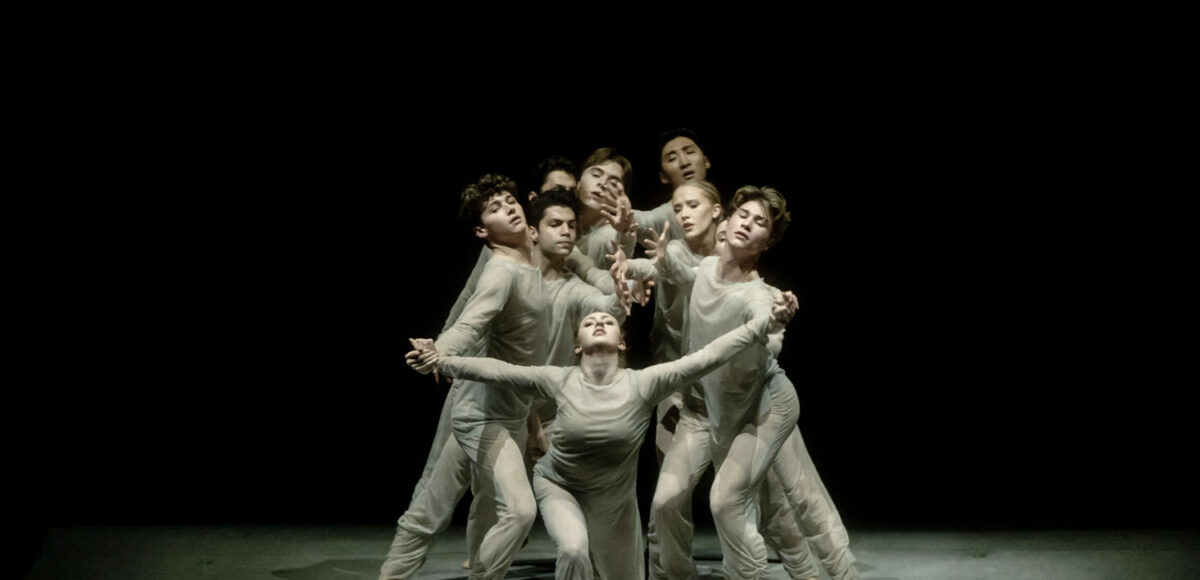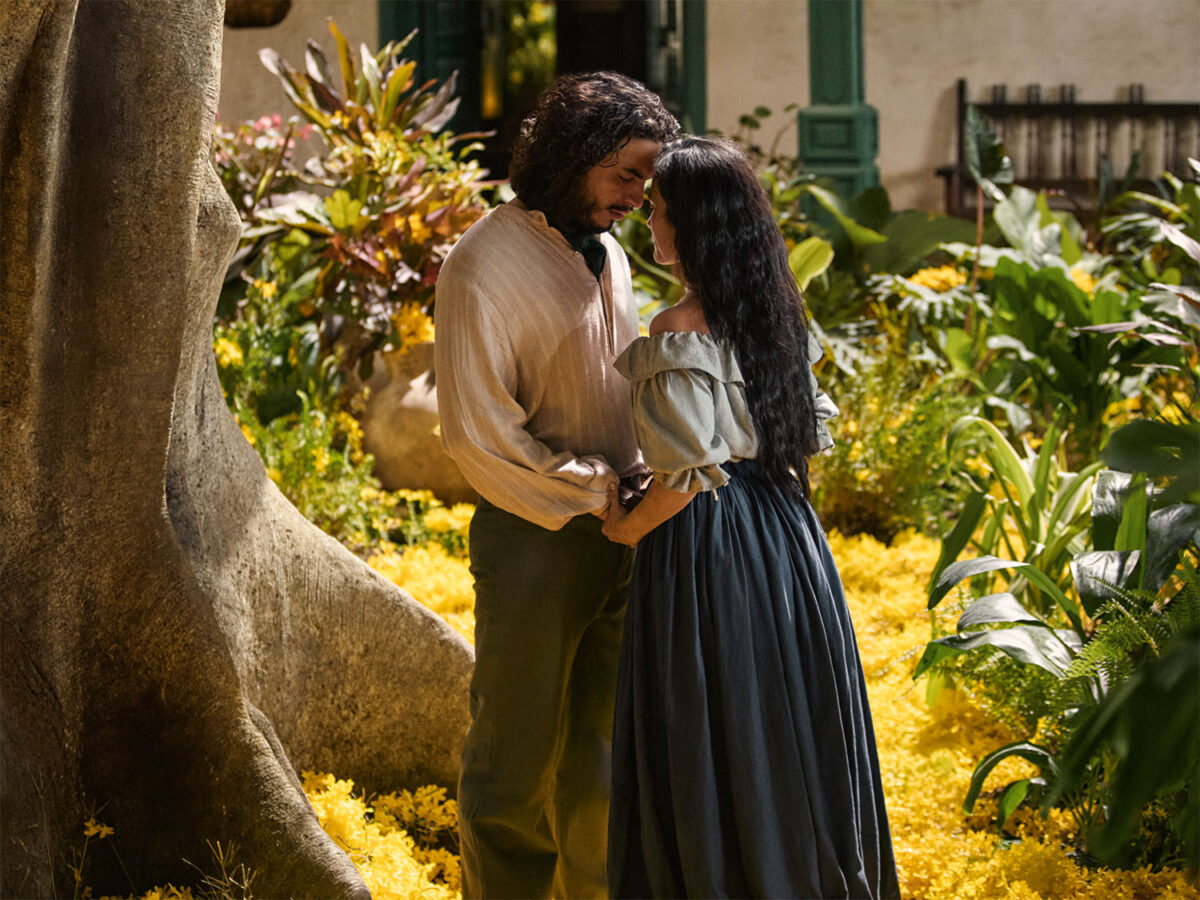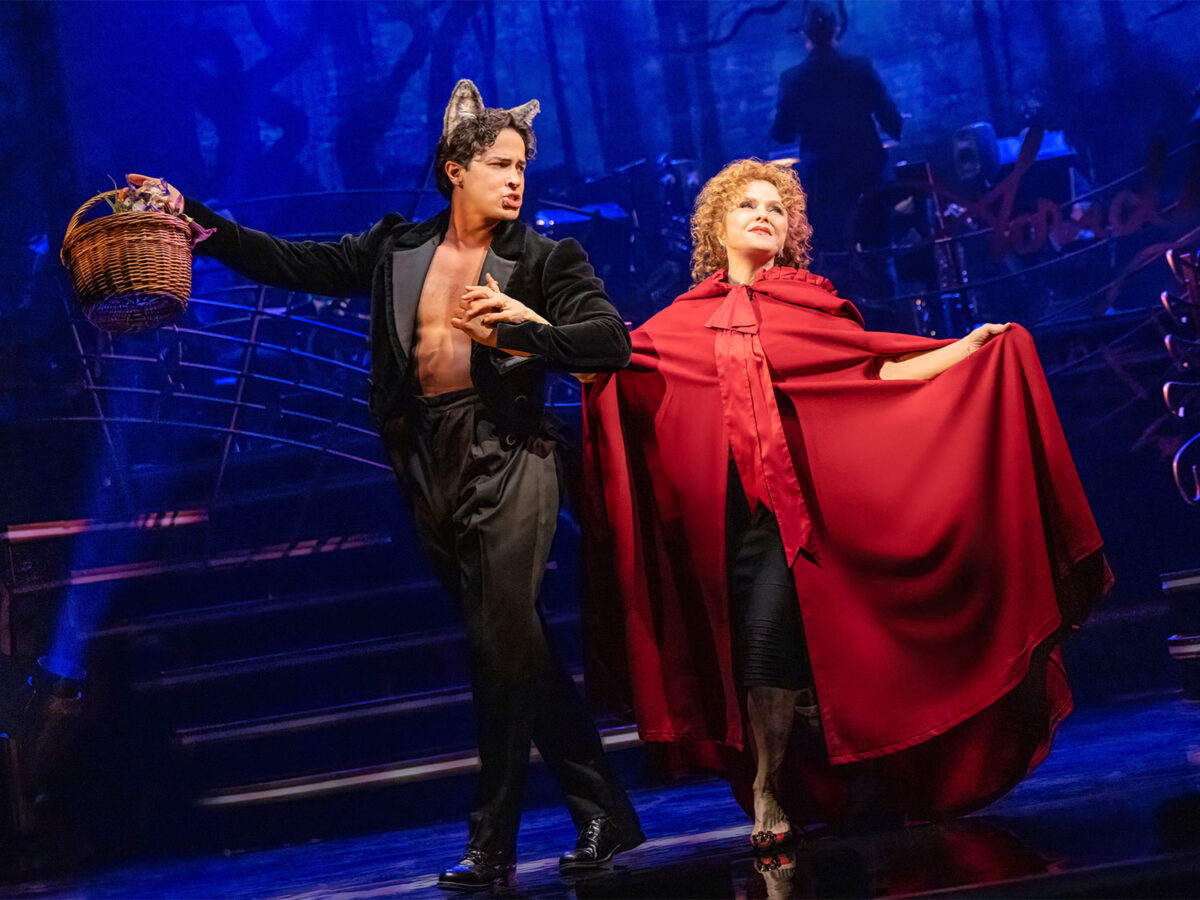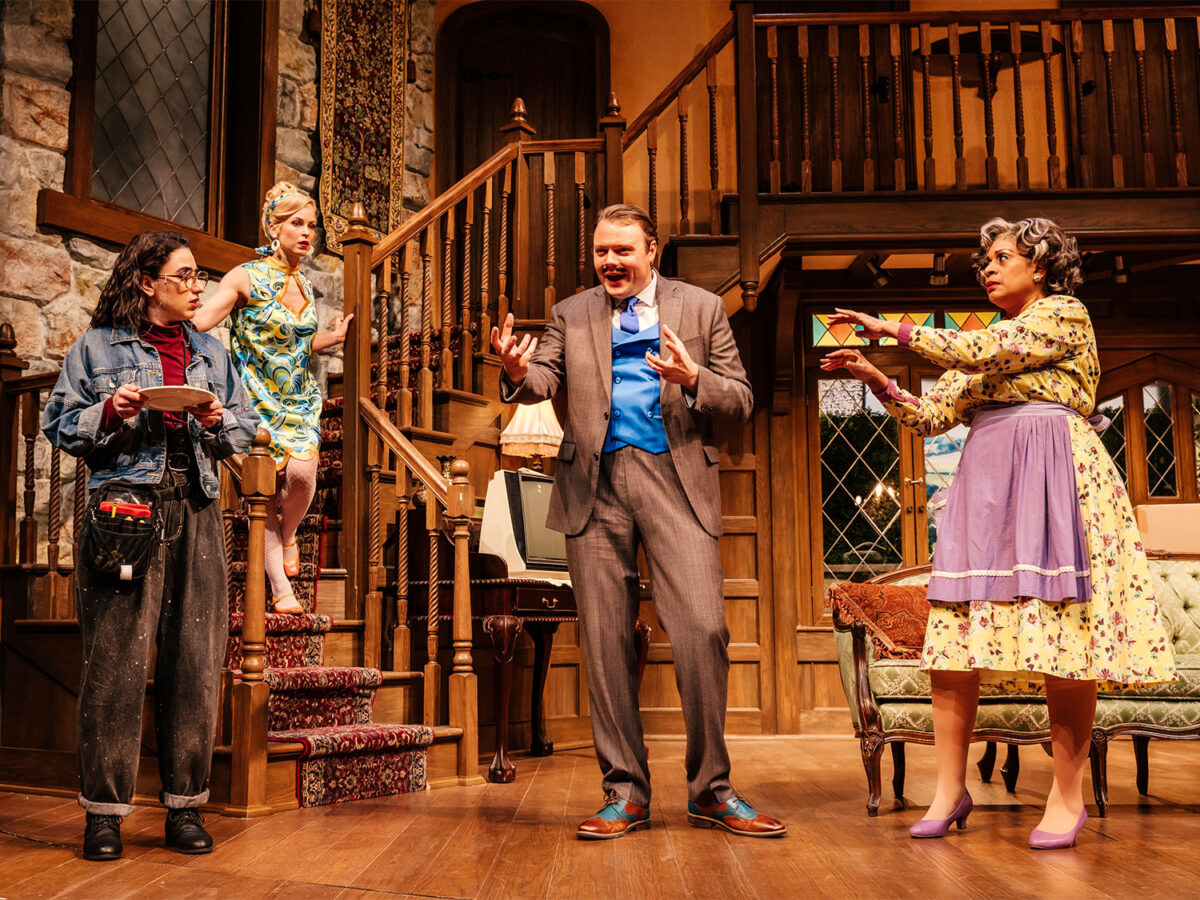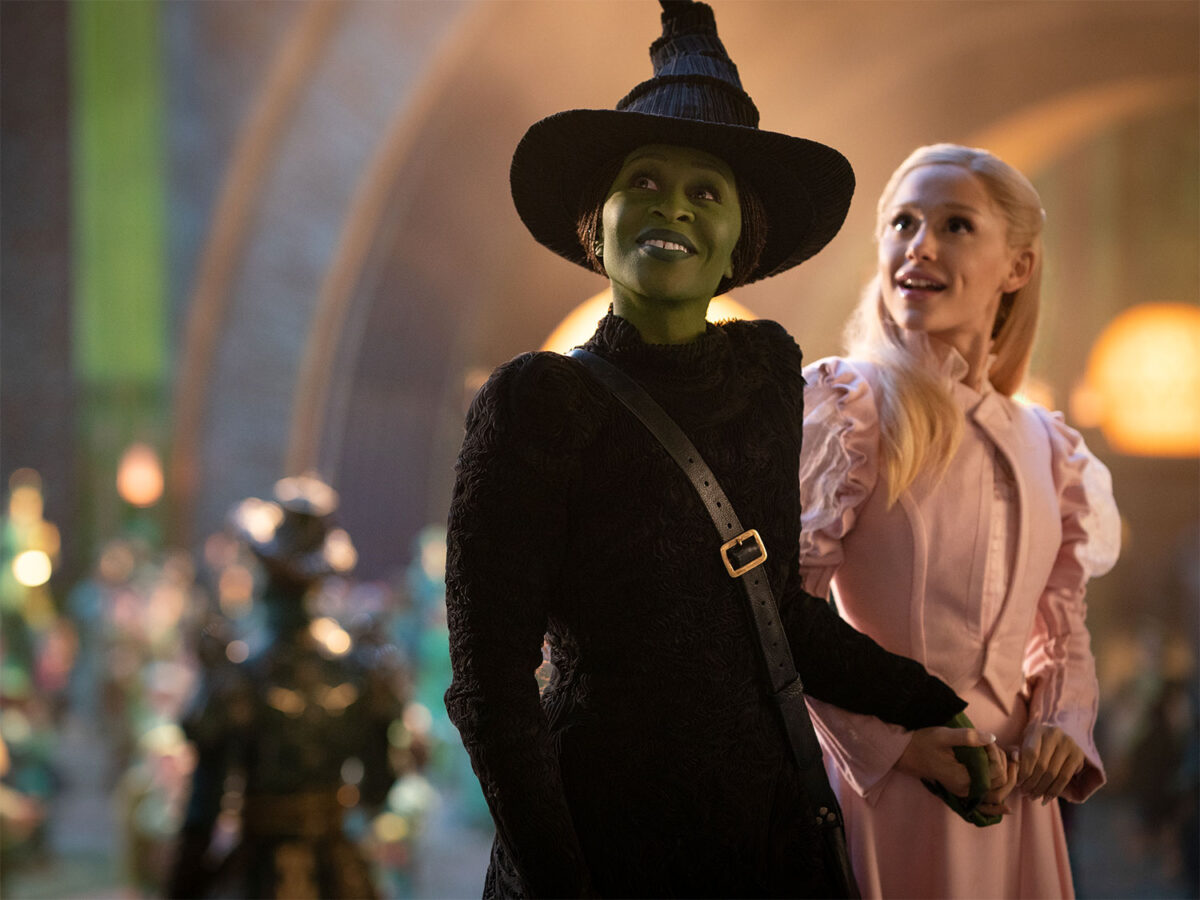Continuing its excellent dance series, The Wallis presented an ambitious Los Angeles Ballet (LAB) program in two acts of choreographic vignettes following the 18 tracks of Max Richter’s “Memoryhouse.” Richter’s somewhat stream-of-consciousness album has more of a musical thread than a thematic one. LAB choreographer and Artistic Director Melissa Barak used “Memoryhouse” as a dance backdrop to World War II and the Holocaust, starting with the piece called “Europe, After the Rain” and ending with “Quartet Fragment.”
LAB, now celebrating 20 years, is composed of a talented group of young dancers, only two of whom have been with the company for as long as six years. Their skills and technique are uniformly good and they dance with feeling. Unlike many companies, the men are as good as the women, and with more experience and more challenging choreography they may be able to make the leap from a good company to a very good or even excellent one.
Barak’s interpretation of Richter’s music as a backdrop to the Holocaust was ambitious but unrealized. Costuming and lighting were an attempt to set a somber stage but the dancing was, in its own way, a bit too light and lyrical to convey a message of tragedy. Still, the dancing was very good; the dancers performed well and occasionally the choreography was inspired, allowing the dancers to shine above what was often rather mundane. The second “act,” after intermission, was a bit better and more challenging than the first.
Had Barak not chosen to try to shoehorn the music and dance into an overly ambitious throughline, one would have been able to enjoy the performances as a very good example of the combination of modern dance vocabulary integrated into a more classical format. Instead, the question that repeatedly ran through my mind was, “What does this have to do with the Holocaust?” Leaving the theater, this same question was echoed by many of the patrons. If this was an attempt at a story ballet, it was not successful.
Nevertheless, the technique and emotion shown by the dancers, some homegrown and others from around the world, all with excellent training, were so good that I would love to see them do something else. They will perform “Cinderella” at the Dolby in June and are known for their “Nutcracker,” danced at various venues around town in December. These are more classical pieces, but I would very much like to see what they could do with ballets created by contemporary artists like Christopher Wheeldon, Amy Hall Garner or Robert Garland. The “Cinderella” that they will dance this summer is choreographed by Edwaard Liang, Artistic Director of the Washington Ballet and a choreographer of interest.
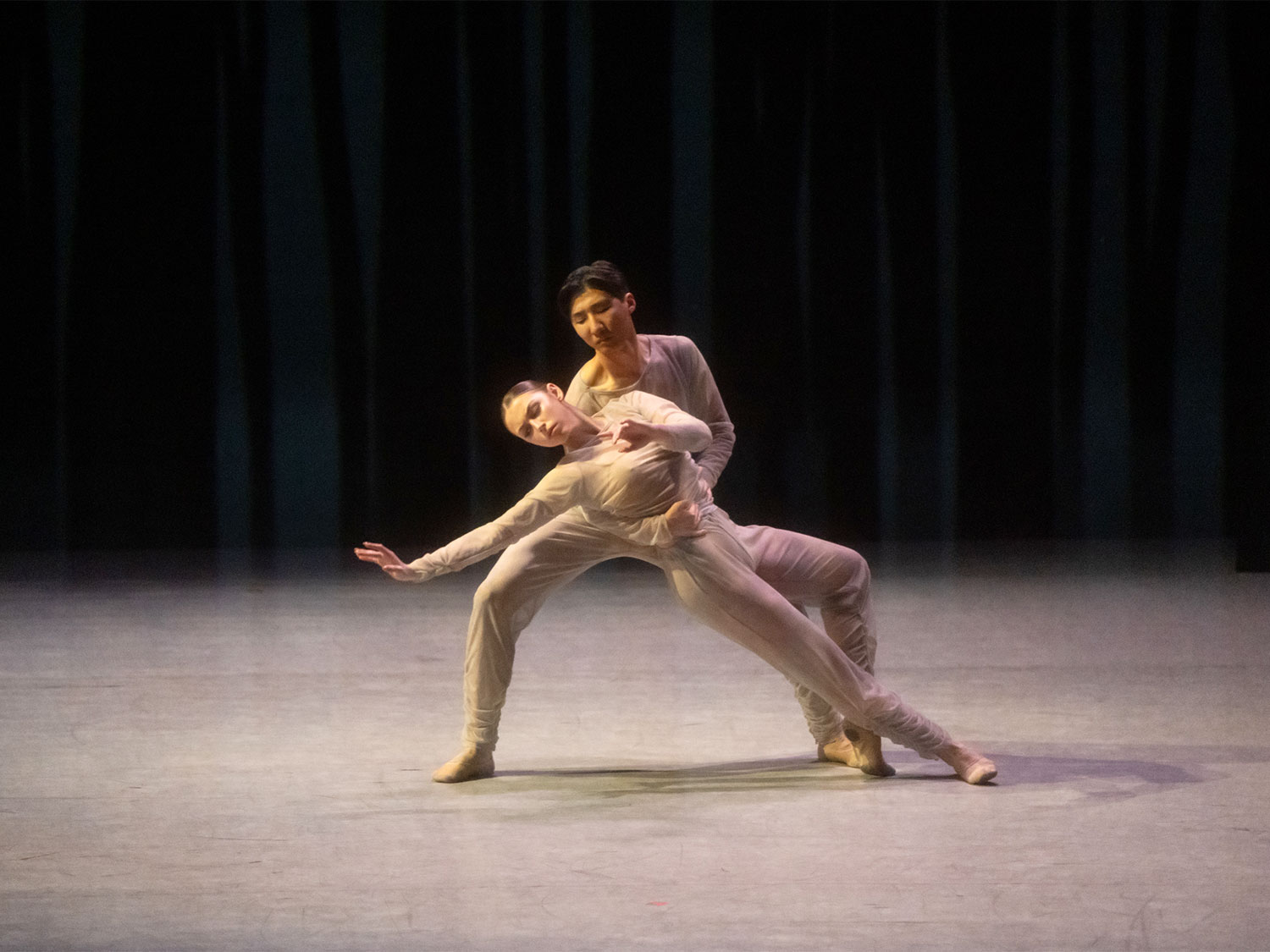
Melissa Barak’s vignettes did not challenge or allow the dancers to exhibit all that they may be capable of, and that is part of the problem. An evening like this one should have challenged not only the dancers but also the audience. Instead, it was a pleasant evening overshadowed by trying to understand what any of it had to do with World War II.
Of particular note, however, was the lighting design by Nathan Scheuer who brilliantly adhered to the theme by conveying a prison, barbed wire and desolation with designs that seemed three-dimensional and opaque and were anything but. Abstract trees on the back curtain seemed to move as the lighting magic gave the impression of movement and wind. One was convinced that the walls constructed of light patterns on a scrim were unbreachable. The non-traditional costuming by Holly Hynes was interesting but, with the exception of the gray outfits meant to suggest camp “pajamas,” was not evocative of the theme.
The end of the program was abrupt, coming suddenly with the black curtain falling and then rising, revealing all of the dancers, leaving the audience no time to reflect on the last vignette entitled “Quartet Fragment.” But then, maybe that was the point.
The Wallis Dance Series will continue with A.I.M. by Kyle Abraham on April 11-12. The internationally renowned Mark Morris Dance Group will perform May 16-18. Finishing the season on June 13-14 will be “Gatherings,” a program curated by Benjamin Millepied, Founder and Artistic Director of L.A. Dance Project.
In an apparently altruistic effort at conservation, The Wallis no longer provides printed programs. Accessing a program on your phone is counterintuitive for a number of reasons. An older crowd has more difficulty manipulating QR codes, myself included, and navigating the app is not intuitive. More importantly, however, cell phones need to be turned off during the performance, making it impossible to follow the thread of dance numbers or figure out who the dancers are. Donors are also given short shrift. Their names should be front and center as supporters of the arts and an example and influence to others; if not in a printed program, at least on a welcome board giving credit and thanks to the people who support the organization. Perhaps The Wallis can find a different approach to saving trees by streamlining the written material or offering old-fashioned stapled pages produced by an in-house printer. Please, please, return to the days of old when a tangible reminder of an evening out could be kept and savored long after the event instead of digitally and quickly forgotten.



